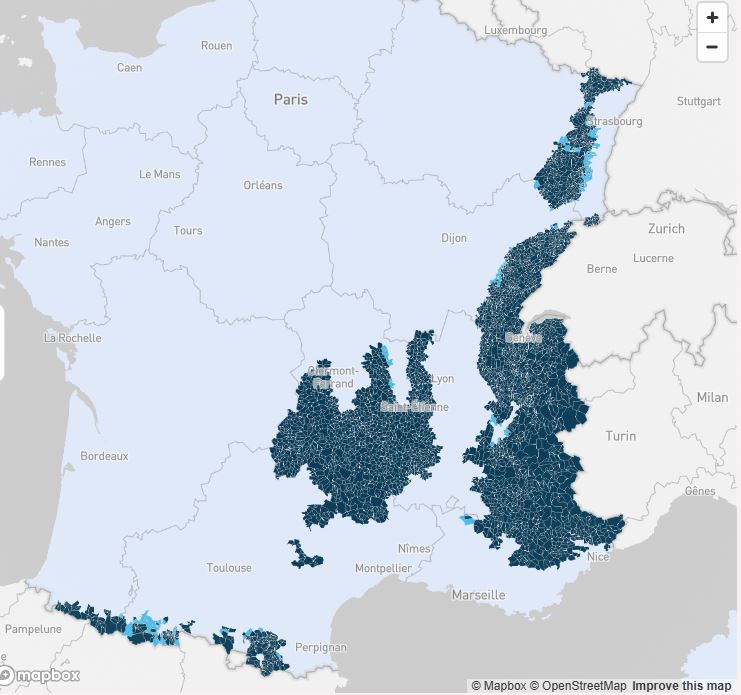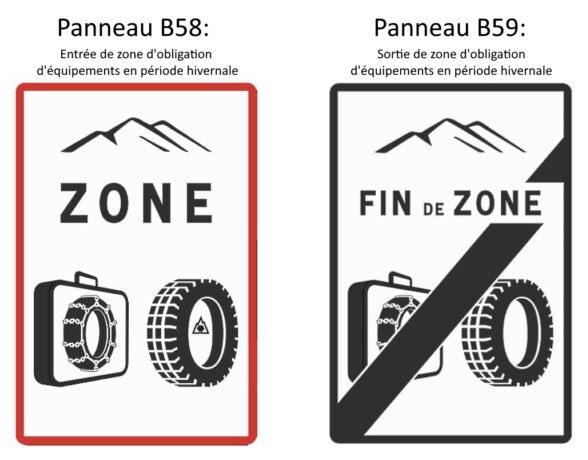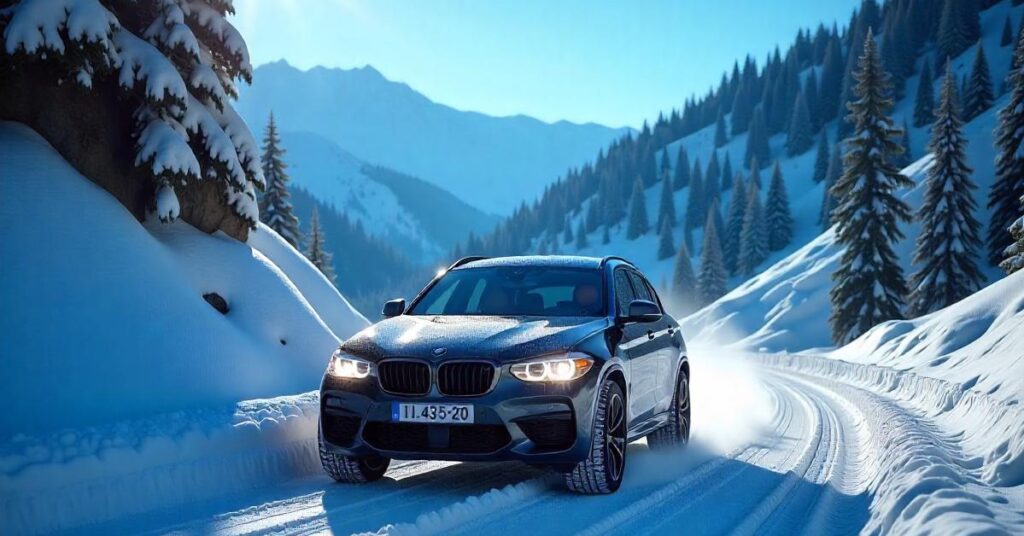Published on: October 30, 2024 | By: @rprasanth_kumar
From 1st November to 31st March every year, drivers in specific mountainous regions of France (namely the Alps, Corsica, Central Massif, Jura, Pyrenees, and Vosges) are required to equip their vehicles with winter tires or carry snow chains or snow socks. This regulation applies across 34 departments, aiming to enhance road safety and prevent vehicle accidents on snowy or icy roads.
Purpose of the Regulation
This requirement as per the Mountain law (loi Montagne) was introduced to improve road safety during winter and reduce the risk of accidents caused by icy or snow-covered roads.
- It also helps to avoid road blockages, particularly in mountainous areas, where improperly equipped vehicles can become stranded and disrupt traffic for miles.
- This rule applies to all four-wheel vehicles, including passenger cars, vans, buses, and trucks.
What are the areas concerned?
- The prefectures of the 34 departments located in mountain ranges (Alps, Corsica, Massif central, Jura, Pyrenees, Vosges) must establish a list of communes in which vehicle equipment becomes mandatory during the winter months.
- This list is created after consultation with the local elected representatives concerned.
- The notification published the respective Prefectures are available here, Arrêtés préfectoraux dans les départements concernés.
- You can also consult the list of municipalities (communes) affected by this winter equipment obligation.

Mandatory Equipment Options
Winter Tires (3PMSF)
- Winter tires that comply with the “3PMSF” (3 Peak Mountain Snow Flake) standard (recognized by a three-peak mountain symbol with a snowflake) are considered suitable under this regulation.
- 4-season (4S, All Weather, All Season) tires must have the 3PMSF marking to qualify.
- Vehicles with studded tires are exempt, as they are inherently winter-ready.
- From November 2024 onwards, only 3PMSF-certified tires will be accepted as an alternative to chains. Drivers using other types of winter tires must also carry chains to meet this requirement. Tires bearing the marking M+S (Mud + Snow) alone will no longer be accepted during the winter months in mountainous regions.
Chains or Snow Socks
- For those not using winter tires, carrying chains or textile snow socks (les chaussettes à neige textiles) is required.
- Chains are more effective but harder to install, while snow socks are affordable and easier to put on, though they wear out faster.
- Either option should be appropriate for your vehicle’s tire size and spacing, and at least two chains or socks are needed for the vehicle’s driving wheels.
Guidelines by Vehicle Type
Passenger Cars and Light Vehicles (M1, N1)
Drivers must either:
- Carry at least two chains or snow socks, or
- Equip their vehicles with winter tires on at least two wheels on each axle (minimum four tires).
Buses and Coaches (M2, M3)
Requirements include:
- Carrying two chains or snow socks, or
- Using winter tires on at least two front (steering) and two driving wheels.
Heavy Goods Vehicles (N2, N3)
- For trucks without trailers, the options are:
- Carry two chains or socks, or
- Install winter tires on two steering and two driving wheels.
- Trucks with trailers or semi-trailers must carry chains or snow socks.
Road Signage in Mountain Regions
To help drivers stay compliant with winter tire requirements in mountainous areas, France has introduced specific road signs to mark zones where winter equipment is mandatory. Here’s what drivers need to know:
Entry & Exit Signs
- Entry Sign (B58): This sign informs drivers that they are entering a zone where winter equipment (chains, socks, or winter tires) is mandatory.
- Exit Sign (B59): This sign indicates the end of the winter equipment requirement zone.

Other Signs
- Winter Period Reminder: A supplementary sign specifies the winter season dates, reminding drivers about the obligations.
- Special Sign (B26) for Snow-Covered Roads: The B26 sign still applies on snow-covered roads, indicating that drivers must not only have chains but also use them when traveling. Outside of the winter season, vehicles equipped with approved winter tires (3PMSF or with snow chains) are considered compliant under this regulation unless the sign specifies otherwise.

Summary
By adhering to these regulations, drivers ensure not only their own safety but also smoother traffic flow during winter months in mountain areas. Whether you opt for winter tires or carry chains, being prepared will make your journey safer and less stressful when snow and ice cover the roads.
Support This Blog!
If you’ve found my articles helpful, interesting or saving your time and you want to say thanks, a cup of coffee is very much appreciated!. It helps in running this website free for the readers.
Sources & References 📕
- Les équipements hivernaux
- Décret n° 2020-1264 du 16 octobre 2020 relatif à l’obligation d’équipement de certains véhicules en période hivernale
- Arrêté du 23 juin 2021 relatif à la modification de la signalisation routière
- Début de la période hivernale: Christophe Béchu et Clément Beaune appellent à la vigilance sur les routes


